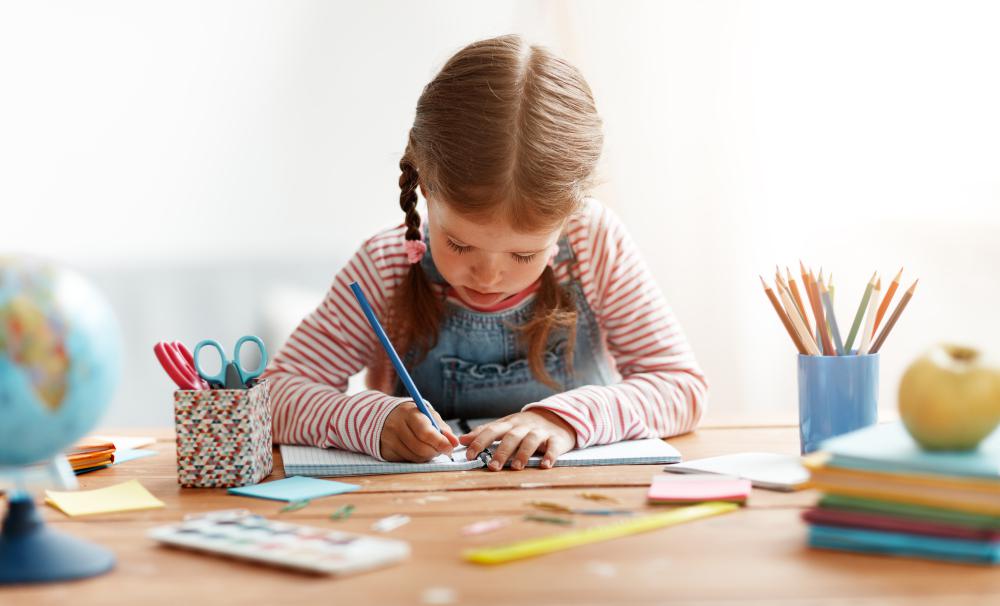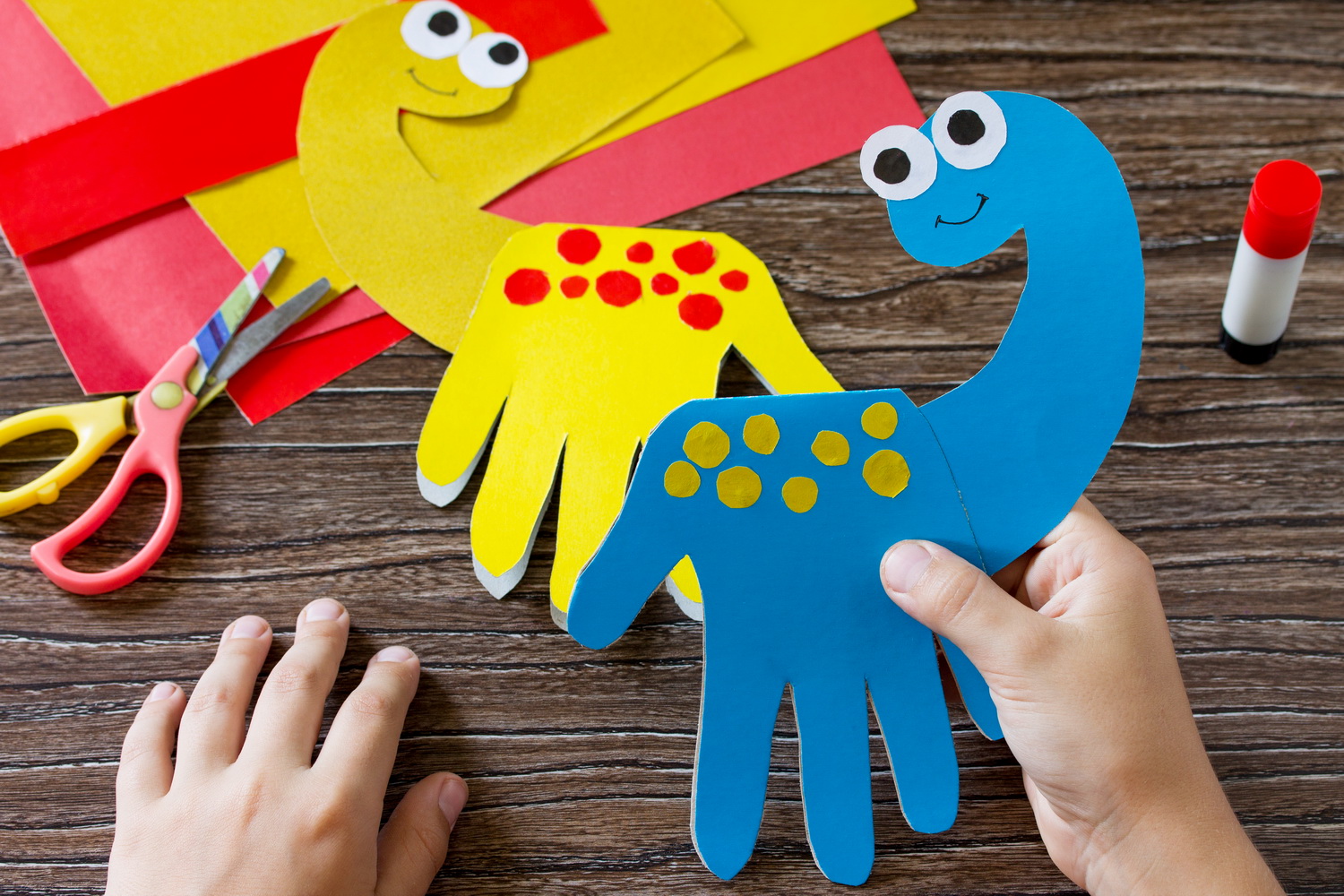Is Your Child Right-Handed or Left-Handed?
Sept. 21, 2021
Some scientists suggest events in pregnancy affect whether a child is born with a specific hand preference or whether they are ambidextrous. Other studies have shown that the dominant hand of an individual relates to the dominant hemisphere in the brain.
In this piece, we will explore ‘handedness’ and the pros and cons of writing with the left, right and both hands. This is an area of much debate and this blog is designed to provide parents and teachers with useful information in order to support their children with writing skills and developmental milestones.
Left-Handedness

10% of the population tends to develop left-handedness. According to Better Health, most children have shown a preference for using one hand or another by the time they are one and a half years old and are definitely right or left-handed by the age of three.
Historically left-handedness was seen as an ‘abnormality’ and left-handed youngsters were forced into using their right hand. This was due to the stigma attached to the ‘awkwardness’ of left-handed writing.
Now being left-handed is much more accepted and it is important as a teacher or parent that you encourage your child to follow their handed preference. If they naturally reach for things, write with and undertake activities with their left hand do not discourage them. Whatever is natural for them is the best route to follow.
There are a few reasons behind the tendency for favouring the left hand. Studies show that more boys than girls are left-handed and suggest that genetics play a part in this predisposition. Other research estimates that environmental factors affect why we become left- or right-handed, specifically when we are within the womb.
As 90% of the population tend to be right-handed, left-handers can have some problems. Often scissors are created for right-handers. We all remember the left-handed children in the classroom being frustrated over not being able to find any left-handed scissors. Also, left-handers tend to write back to front, known as ‘mirror’ writing. This is not a sign of dyslexia and is just a normal reflex for left-handers, it will resolve given time and encouragement.
From a practical perspective it can also be frustrating for left handed children as Western writing runs from left to right. As a result the left hander often has to contort their hand so it doesn’t smudge the ink.
It isn’t all challenges for the left-handed people though. Often they excel from a sporting perspective because they are able to take their opponents by surprise and gain a competitive edge. Right-handed athletes aren’t used to playing against those with a different hand preference and as a result, struggle to gauge their actions. Left-handers tend to excel specifically at fencing and boxing.
So if your little one displays a preference for the left hand early on don’t discourage them, as you may have a future pro fencer or boxer in the making right in front of you.
Right-Handedness

As children develop their motor skills they tend to use both their right and left hands, specifically for simpler tasks like grasping a toy. This is because both hands are equally able to undertake such tasks. It is also because switching hands to do simple tasks gives their hand muscles a break and stops either hand from getting too tired.
It is only when more complicated tasks are required, using fine motor skills that utilise pincer grips and varying coordination abilities, that the majority of the population favour a specific hand. 90% of us choose the right hand.
A study by PubMed into the benefits of right-handedness found that there was a tendency for right-handed children to excel in their overall spatial awareness and ability. However, the study also displayed that both right and left-handers were as capable when it came to verbal development irrespective of their hand preference.
Mixed Handedness - Ambidexterity
Ambidexterity is a feature of cross laterality. Also known as cross-dominance, this means that children develop their motor skills by favouring one hand for some actions, and the other hand for different tasks. They, therefore, do not show a preference for one side and are instead able to undertake tasks with equal success along both sides of their body, specifically when using their hands.
Noticing Which Hand Your Child Prefers and the Best Ways to Support Them

As mentioned previously, children tend to use both their hands up until they are about three, however, if they have not started to favour one hand in particular by the age of four then mixed handedness, or ambidexterity, may be their normal.
A good way to help your child as they develop is to test their choice. You can place a number of objects directly in front of them every day and record which hand they choose to grasp them. If your records show a favoured hand for the majority of the time, you can assume this is their natural tendency. Once you know this you can encourage them in this pattern by placing pencils, eating utensils and other objects into that hand.
It can also be useful if your child is displaying a dominant hand to label which hand does what. For example, it can be helpful in some instances to title one hand the ‘writing’ hand and the other the ‘helper’ hand. This can help them to understand their developing dominance and dissipate confusion.
If there is no clear pattern of hand usage, that’s ok as well. Just keep monitoring their progress, encouraging them by placing things into both hands and supporting their muscle development equally.
A great way to help your child if they seem to be ambidextrous is to encourage lots of multi-handed activities, also known as bilateral coordination. By helping them to use both their hands whilst playing and undertaking daily tasks you will help develop their hand muscles and really get to grips with which hand works best for them during different tasks. This can also help you see if they have any problems crossing the midline (the centre of their body) and to introduce suitable activities along the way to aid their development in this area.
General Tips to Help Writing Development

As your child gets older and their motor skills become more developed it is good to know some ways in which to help them with their writing skills, irrespective of which hand they use.
Some useful tips to aid left-handed children with their writing development is to hold their pencil at least three centimetres from the point. You can indicate where this is by placing a small rubber band at the appropriate location on the writing implement. This will allow them to write without smudging their text.
You can also utilise a sloped writing board for left-handers and ensure they aren’t sitting too close to any right-handed children to avoid any uncomfortable elbow and arm clashes. Using softer lead pencils with a larger, more flexible nib can also help left-handers develop their dexterity. Tilt the paper slightly to the right at a 45-degree angle and let the child experiment with this rotation to find a comfortable position for them.
When your child is younger, pay attention to the development of their shoulder stability as this is an important element of what enables them to begin to write. It is an important developmental hurdle for them and enables youngsters to scribble using their whole arm. As they progress they will begin to rest their arm on the table and this will aid them in controlling the writing implement.
Shoulder stability allows your child to control the more precise actions of their hands and fingers. If your child doesn’t crawl for long periods or really dislikes time on their tummy it can sometimes take them longer to develop shoulder stability. This is therefore something to keep an eye on as they grow and progress.
No Right or Wrong
Whatever hand your child shows a preference for, the emphasis should always be on letting them develop in a way that is natural for them. There is no right and wrong in terms of preference. No matter which hand is a dominant one, practicing cursive writing worksheets may always be good training to uplevel your kid's writing skills. If your child is struggling, it is always best to talk to a teacher, occupational therapist or healthcare professional to gain further information and insight.
About the author
Alison Carter - Play-Based Educator, ESL Teacher, Trauma Sensitive Yoga and Pilates Teacher.
Manchester, England, UK.












